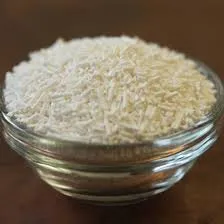
anticaking agent e551
Understanding E551 The Common Anticaking Agent
In the realm of food additives, few substances have garnered as much attention as E551, commonly known as silica or silicon dioxide. Typically found in powdered foods and seasonings, E551 serves a pivotal role in enhancing food texture and preventing clumping, making it an essential ingredient in various culinary applications. This article seeks to provide a comprehensive overview of E551, exploring its properties, uses, safety, and regulatory status.
What is E551?
E551 is a naturally occurring mineral that exists in various forms, with its most common being amorphous silica. As an anticaking agent, it works by absorbing moisture and preventing the agglomeration of fine particles in powdered substances. This functionality is crucial in maintaining the free-flowing nature of products, ensuring that they can be easily dispensed and used.
Uses of E551
E551 is widely employed in a myriad of industries, particularly in food production. You'll often encounter it in powdered seasonings, baking mixes, powdered soups, and even table salt. By preventing clumping, E551 ensures that these products have a consistent texture and do not lose their quality over time. Additionally, it can be found in non-food applications, such as in the manufacturing of cosmetics, pharmaceuticals, and even as a filler in paints and electronics.
The versatility of E551 extends beyond its role as an anticaking agent. In certain formulations, it can also serve as a flow agent, improving the handling and processing of powdered materials. In industrial settings, it helps prevent the settling of powders in storage and transport, thereby streamlining operations.
anticaking agent e551

Safety and Regulatory Status
The safety of food additives is of utmost importance to regulatory bodies around the world. E551 has been extensively studied and is generally recognized as safe (GRAS) when consumed within established limits. The European Food Safety Authority (EFSA) and the U.S. Food and Drug Administration (FDA) have both evaluated E551 and deemed it safe for use in food products.
Despite its safety profile, there are some considerations to keep in mind. Excessive consumption of silica has been linked to potential health risks, including respiratory issues when inhaled in its powdered form. However, the levels of E551 used in food products are well below any thresholds that could pose a health risk. For consumers, it is always advisable to adhere to a balanced diet and consume food additives in moderation.
Conclusion
E551, or silica, is a vital anticaking agent that plays an essential role in the food industry and beyond. Its ability to prevent clumping and enhance texture makes it indispensable in a wide range of products. With a strong safety profile supported by regulatory agencies, it is clear that E551 contributes positively to the quality of many everyday foods. As consumers, understanding the role of such additives can empower us to make informed choices about the products we consume.
In summary, while E551 may not be a household name, its impact on food quality is significant. As we continue to explore the world of food science, the importance of such additives will remain a topic of interest and discussion, showcasing the blend of nature and technology that ensures our food is not only safe but also enjoyable.
-
nitrile-rubber-honoring-strict-production-standardsNewsAug.22,2025
-
aspartame-ingredients-honoring-food-safety-valuesNewsAug.22,2025
-
fertilizer-for-balanced-plant-nutritionNewsAug.22,2025
-
cyanide-gold-processing-with-high-purity-additivesNewsAug.22,2025
-
formic-acid-in-textile-dyeing-applicationsNewsAug.22,2025
-
aluminum-hydroxide-gel-in-skincare-productsNewsAug.22,2025
-
Regulatory Compliance for Global Mining Chemicals UseNewsAug.12,2025
Hebei Tenger Chemical Technology Co., Ltd. focuses on the chemical industry and is committed to the export service of chemical raw materials.
-

view more DiethanolisopropanolamineIn the ever-growing field of chemical solutions, diethanolisopropanolamine (DEIPA) stands out as a versatile and important compound. Due to its unique chemical structure and properties, DEIPA is of interest to various industries including construction, personal care, and agriculture. -

view more TriisopropanolamineTriisopropanolamine (TIPA) alkanol amine substance, is a kind of alcohol amine compound with amino and alcohol hydroxyl, and because of its molecules contains both amino and hydroxyl. -

view more Tetramethyl Thiuram DisulfideTetramethyl thiuram disulfide, also known as TMTD, is a white to light-yellow powder with a distinct sulfur-like odor. It is soluble in organic solvents such as benzene, acetone, and ethyl acetate, making it highly versatile for use in different formulations. TMTD is known for its excellent vulcanization acceleration properties, which makes it a key ingredient in the production of rubber products. Additionally, it acts as an effective fungicide and bactericide, making it valuable in agricultural applications. Its high purity and stability ensure consistent performance, making it a preferred choice for manufacturers across various industries.





